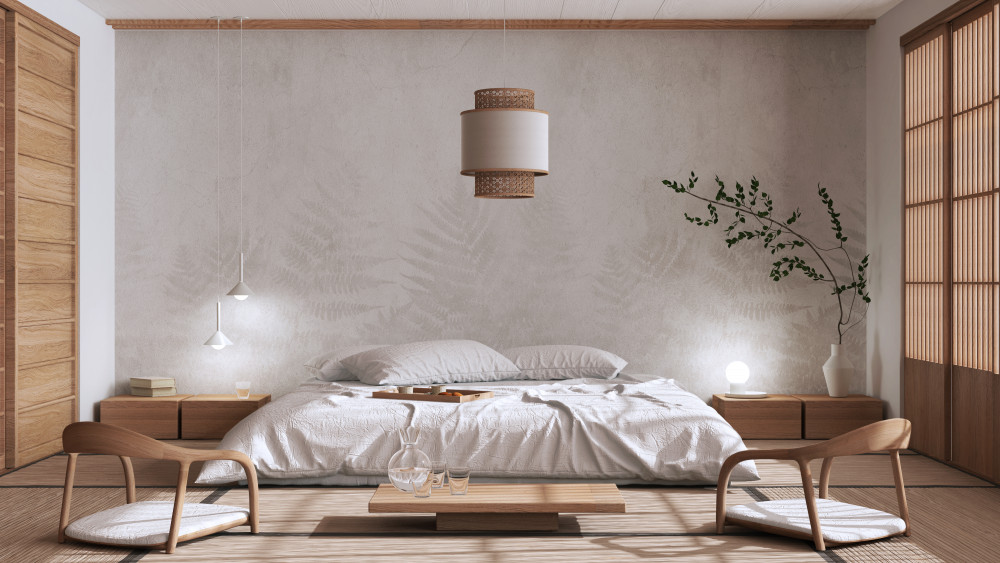
November 22, 2024
Japandi: The Fusion of Japanese Minimalism and Scandinavian Comfort
How to incorporate intentionality, balance and Danish hygge into your home and life
When I first arrived in Japan not too long ago, I brought a single suitcase—just enough clothes, shoes and essentials to get by. My tiny Tokyo apartment only had a desk and a bed. At first, it felt bare and, honestly, a bit sad. But as I settled into Tokyo’s rhythm, I realized the simplicity of my surroundings unexpectedly calmed me. This was the closest I’d ever come to Japanese minimalism, and while it’s not just about having fewer things, this pared-down existence felt like a quiet revelation compared to what I was used to.
Coming from Denmark, where hygge—that innate sense of warmth and coziness—runs in our DNA, I wasn’t sure how well it would mesh with such a sleek aesthetic. But here’s the thing: it does. The merging of Japanese minimalism and Scandinavian comfort—known as Japandi—is gaining traction around the world, and after living with this mindset for a few months, I get it. Japandi goes beyond a design trend. It’s a lifestyle. And it’s a pretty wonderful one.
Origins of Japanese Minimalism
Let’s start with Japanese minimalism. This isn’t just about clean lines and empty spaces. Rooted in Zen Buddhism, it cultivates a lifestyle of intentionality and balance. It emphasizes harmony with nature and the use of natural materials like wood, stone and paper for instance. Think of it as a quiet rebellion against the chaos of modern life, where each item serves a purpose and brings a sense of calm.
The Japanese concept of danshari captures this philosophy perfectly. By refusing unnecessary items, disposing of excess and separating from material attachments, danshari encourages us to discard up to 80% of our belongings and keep only what truly serves us. This practice shows that reducing physical clutter clears the mind, making room for clarity and peace.

Understanding Danish Hygge
Now, let’s shift to the Scandinavian half of this beautiful blend—Danish hygge. Imagine wrapping yourself in a soft blanket on a rainy afternoon with your favorite book or Netflix series, a cup of hot chocolate and candles burning. That’s hygge in a nutshell. It’s the art of coziness, creating spaces that feel warm, inviting and secure. It’s about finding joy in small moments—laughing with friends over home-cooked meals or drinks at a local bar. Hygge also means going for a nice autumn stroll in the park or enjoying long road trips through scenic landscapes. Hygge is savoring a freshly baked cardamom bun. Hygge is about relaxing and reducing stress.
The Philosophy Behind Japandi
Japandi blends these two philosophies in a perfect marriage.
Picture a room filled with sleek furniture that balances form and function, softened by cozy throws and tactile natural materials. Further, imagine a soothing color palette of earthy soft grays, warm beiges and dusty greens. You might find a simple wooden table at the center, surrounded by low, comfortable seating that encourages gathering. Natural light filters through airy linen curtains, highlighting the textures and colors that create a harmonious flow.
Because Japandi cultivates a lifestyle that values mindfulness and emotional well-being—a reminder that home is a place to relax and feel at peace. For those juggling the demands of modern life, this interior offers a way to slow down, breathe and find balance.

Designing a Japandi-Inspired Home and Life
So, how do you bring Japandi into your life? Start by decluttering. This doesn’t mean getting rid of everything but rather curating your space with items that serve a purpose or bring you joy. Focus on quality over quantity—choose organic pieces that are well-made, sustainable and timeless. When it comes to lighting, warm ambient lights are key, with natural light preferable.
Incorporate natural materials that connect us to nature. For instance, plants are essential for the Japandi lifestyle and bring life and vibrancy to a minimalist space. A 1989 NASA study showed that houseplants improve air quality by removing cancer-causing chemicals like formaldehyde and benzene from the air. So, not just for the aesthetics—bring plants into your home for your health too.
For sleeping, a thin futon simply won’t cut it. You need a tall, wide bed with multiple duvets and pillows, with freshly washed, air-dried linen sheets and covers whenever possible. If you’re serious about embracing the Scandinavian sleep trend, make it a habit to air out your duvet daily. Trust me, you’ll feel the difference. Hang it out your window or if you have one, on an outdoor clothesline, and leave it for a couple of hours. Finally, to complete your Japandi home, add a large couch with a chaise longue and a soft rug underneath.

Japandi also focuses on how your home feels. Embrace slow living. Start your day with a mindful ritual—a quiet moment with a cup of coffee, for example. Take your time making it and enjoy it by your open window. These small hygge moments make all the difference.
The Best of Both Worlds
In the end, Japandi reflects the best of both Japanese minimalism, Danish hygge and Scandinavian aesthetics. It’s a design style full of contrasts—clean but warm, simple but deeply comforting. In a fast-paced world that often feels overwhelming, Japandi offers a way to create spaces and lives that are balanced, comfortable and full of quiet cozy moments. So, it’s not just about how we decorate our homes. It’s about how we choose to live in them too.
Want to adjust to the Japandi lifestyle? Start by getting these 8 space-saving products to optimize your living space.







